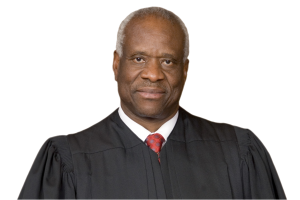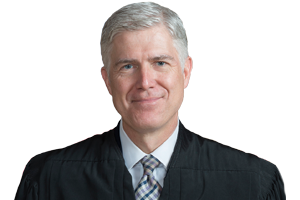Hemphill v. New York 20-637
6th Amendment
finds A criminal defendant, does not forfeit his confrontation right, merely by making an argument, in his defense based on a testimonial out-of-court statement like a plea allocution.
| Docket No. | Op. Below | Argument | Opinion | Vote | Author | Term |
|---|---|---|---|---|---|---|
| 20-637 | N.Y. | Oct 5, 2021 | Jan 20, 2022 | 8-1 | Sotomayor | OT 2021 |
Holding: The trial court’s admission—over Hemphill’s objection—of the plea allocution transcript of an unavailable witness violated Hemphill’s Sixth Amendment right to confront the witnesses against him. Judgment: Reversed and Remanded, 8-1, in an opinion by Justice Sotomayor on January 20, 2022. Justice Alito filed a concurring opinion, in which Justice Kavanaugh joined. Justice Thomas filed a dissenting opinion.
SCOTUSblog Coverage
- Justices affirm Crawford’s application of Sixth Amendment confrontation clause to testimonial evidence (Shaakirrah Sanders, January 25, 2022)
- Court rejects “door opening” as a Sixth Amendment confrontation-clause exception (Shaakirrah Sanders, January 20, 2022)
- Justices probe both sides in clash between confrontation clause and evidentiary rules (Shaakirrah Sanders, October 8, 2021)
- Will the court recognize New York’s “door opening” rule as an exception to the Sixth Amendment’s confrontation clause? (Shaakirrah Sanders, October 4, 2021)
- Cases on Boston Marathon bomber, CIA secrets headline October argument calendar (Amy Howe, July 13, 2021)
- Justices add confrontation-clause case to next term’s docket (Amy Howe, April 19, 2021)
- Two Sixth Amendment claims and an ERISA lawsuit (John Elwood, April 15, 2021)
- Petitions of the week: Re-opening church doors and opening evidentiary doors (Andrew Hamm, December 11, 2020)
Facts of the case
In April 2006, two men got into a fight with several other people on a street in the Bronx. Shortly thereafter, someone opened fire with a 9 millimeter handgun, killing a child in a passing car. Three eyewitnesses identified Nicholas Morris as the shooter. Police searched Morris’s home and found a 9 millimeter cartridge and ammunition for a .357 revolver. They arrested him the next day. He was indicted for the child’s murder and for possession of a 9 millimeter handgun, but the prosecution ended in a mistrial. Instead of trying him again, the State offered Morris a deal: If Morris pleaded guilty to possessing a firearm at the scene of the shooting, the State would request that the murder charge be dismissed with prejudice. Morris accepted the plea deal. However, the State charged Morris with possessing a .357 revolver at the scene of the shooting, rather than a 9 millimeter established as the murder weapon. The prosecution lacked sufficient evidence to establish possession of the .357 revolver, so Morris supplied the evidence through his own statement.
In 2013, the state charged Darrell Hemphill, the petitioner in this case who was also present at the fight in the Bronx, with the murder. At trial, Hemphill elicited testimony that police had recovered the 9 millimeter cartridge on Morris’s nightstand hours after the shooting. In response, the prosecution sought to introduce into evidence Morris’s statement that he possessed a .357 revolver at the scene. Based in part on this evidence, Hemphill was found guilty of second-degree murder and sentenced to twenty-five years to life in prison. An appellate court affirmed the conviction, as did New York’s highest court.
Question
When, if ever, does a criminal defendant who “opens the door” to evidence that would otherwise be barred by the rules of evidence also forfeit his right to exclude evidence otherwise barred by the Confrontation Clause?
Conclusion
Sort:
-
8–1 DECISION FOR HEMPHILL
A criminal defendant does not forfeit his confrontation right merely by making an argument in his defense based on a testimonial out-of-court statement like a plea allocution.

Sotomayor 
Roberts 
Thomas 
Breyer 
Alito 
Kagan 
Gorsuch 
Kavanaugh 
Barrett
A criminal defendant does not forfeit his confrontation right merely by making an argument in his defense based on a testimonial out-of-court statement like a plea allocution.
Justice Sonia Sotomayor authored the 8-1 majority opinion of the Court. The Confrontation Clause of the U.S. Constitution guarantees criminal defendants the right to confront witnesses against them, and the Court has recognized no open-ended exceptions to this requirement—only those exceptions established at the time of the founding. In People v. Reid, New York’s highest court held that a criminal defendant “opens the door” to evidence that would otherwise be inadmissible under the Confrontation Clause if the evidence was “reasonably necessary” to correct a misleading impression made by the defense’s argument. Contrary to the State’s contention, the Reid rule is not merely procedural, but a substantive principle of evidence that dictates what material is relevant and admissible. Such an exception is antithetical to the Confrontation Clause.
Justice Samuel Alito authored a concurring opinion, in which Justice Brett Kavanaugh joined, to note different circumstances under which a defendant can be deemed to have waived the right to confront adverse witnesses.
Justice Clarence Thomas dissented, arguing that because Hemphill did not raise his Sixth Amendment claim in the New York Court of Appeals, the Court lacks jurisdiction to review its decision.

